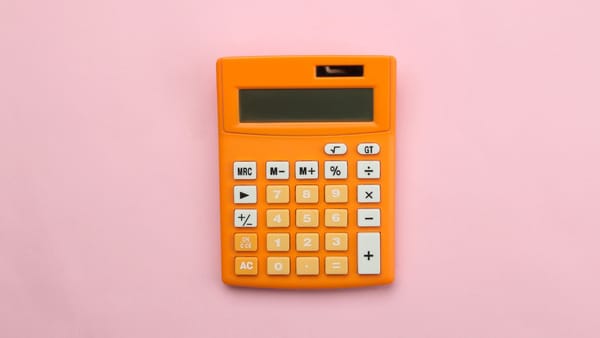Twitter Ads Keywords Generator: Turn Seed Ideas into High-Intent Keyword Lists (Fast)
Struggling to find enough quality keywords for X (Twitter) Ads? You’re not alone. Discoverability on X is driven by language: what people tweet, search, and engage with. The faster you turn seed ideas into diverse, intent-richkeyword lists, the sooner your ads start reaching the right timelines.
This guide shows you how to use a Twitter Ads Keywords Generator (embedded below on your blog) to create 25/50/75/100 order-agnostic keyword ideas—complete with Volume, Difficulty, CPC, Ad Value, and Political flags—so you can plan smarter campaigns in minutes.
Why Twitter/X keyword lists are different (and why that’s good)
Unlike search engines, people don’t always use perfect phrases on social. They riff, misspell, hashtag, and rearrange words. Winning keyword lists for X should:
- Be order-agnostic. “black coffee” should match “coffee black,” and even “I like my coffee… black.”
- Embrace variety. Include stems, synonyms, misspellings, and hashtags to mirror how people actually type.
- Cover intent. Add modifiers like near me, deal, tips, best, review, recipe to map to purchase and research moments.
- Stay brand-safe. Avoid obvious political terms unless you purposely want that audience.
That’s exactly what your generator produces.
What the generator creates (and how to read it)
When you enter one or more seeds (e.g., black coffee, travel insurance), the tool builds an expanded list and returns exactly the quantity you choose—25, 50, 75, or 100—with these helpful columns:
- Keyword – Order-agnostic phrasing, including variants (#hashtags, stems, misspellings, intent/context modifiers).
- Volume (0–100) – A heuristic interest score. One-word, transactional, and broad phrases usually trend higher; hashtags and misspellings trend lower.
- Difficulty (0–100) – A proxy for competition. Tends to follow volume and transactional intent.
- CPC ($0–$10) – An estimated cost tendency. Transactional phrases skew higher; hashtags/misspellings lower.
- Ad Value (Low/Medium/High) – Derived strictly from CPC:
- $0–$0.99 → Low
- $1–$3.99 → Medium
- $4–$10 → High
- Political (Yes/No) – Defaults to No unless the phrase contains obvious political words (e.g., racism, nazi, rights). Word-boundary matching avoids false positives such as copyright.
Tip: Use Ad Value to prioritize ad groups. Launch “High” first if your budget is tight; build “Medium” for scale; test “Low” to find hidden gems with cheap clicks.
How to use the Twitter Ads Keywords Generator (step-by-step)
- Add 1–5 seed phrases. Short heads (e.g., coffee) and specific long-tails (e.g., black coffee recipe) both work.
- Choose your list size: 25/50/75/100. You’ll always get the exact number.
- Generate. The tool expands seeds into order-agnostic variations, then scores Volume/Difficulty, estimates CPC, derives Ad Value, and flags Politics.
- Review the list. Skim the “High” Ad Value items to build your first ad group. Keep “Medium” for testing and scale.
- Export CSV. Use the Download CSV button to bring the full dataset into your ad planning sheet or directly into your workflow.
- Build ad groups. Cluster by intent: deal/discount (bottom-funnel), best/top/review (mid-funnel), guide/tips/recipe (upper-funnel).
- Refresh weekly. New slang and seasonal variants appear over time; regenerate to keep creatives fresh.
Example: From “black coffee” to launch-ready lists
Start with a seed like black coffee. Your generator will diversify into:
- Hashtags & formats:
#blackcoffee,black coffee … recipe,"black coffee" - Synonyms & stems:
coffee black,espresso strong,dark coffee,americano - Intent modifiers:
black coffee near me,best black coffee,black coffee recipe,black coffee vs latte - Context terms:
home brew black coffee,coffee shop black coffee,morning black coffee
You’ll then see Volume/Difficulty, a CPC estimate, and Ad Value derived from CPC. Pick a mix of High (to win conversions) and Medium (to expand reach efficiently). Save Low for experiments or content distribution.
Smart campaign structure with your CSV
- By Ad Value:
- High CPC (High Ad Value): Create a “Buy Now” ad group with strong CTAs and price/offer hooks.
- Medium CPC (Medium Ad Value): Use social proof and feature highlights.
- Low CPC (Low Ad Value): Promote blog posts, quizzes, and short videos to warm up audiences cheaply.
- By Intent: near me / price / deal → bottom-funnel; review / vs / best → mid-funnel; how to / tips / guide → upper-funnel.
- By Format: Separate hashtags from plain phrases. Hashtag groups can be cheaper but broader—great for reach and testing.
- Brand safety: The Political column stays No unless the keyword is obviously political. Exclude “Yes” lines if you want a neutral posture.
Optimization ideas that compound results
- Creative mirrors intent. If the ad group includes deal/discount, show the % off in the first 2 lines. If it’s how to/guide, feature a quick tutorial video or checklist.
- Rotate creatives by volume. High-volume groups burn out faster; plan extra variants.
- Protect efficiency. If CPC drifts up, split top performers into their own ad group to control bids and budgets.
- Use negatives. If your product excludes certain contexts (e.g., recipe), filter those rows out before import.
- Refresh monthly. Regenerate with seasonal seeds (holiday gift, summer sale) to ride demand spikes.
FAQs
Is the tool’s CPC real?
It’s an estimate designed to help you prioritize. Always validate against your live campaign data.
Why are some phrases in quotes or with “…”?
Quotes and ellipses are visual cues for exact/order-agnostic thinking. They signal how users actually write and read, and help you brainstorm ad copy and negative lists.
Why “Political: Yes” on a few terms?
Only obvious political words flip it to Yes (e.g., racism, nazi, rights). Everything else stays No by default for brand safety.





